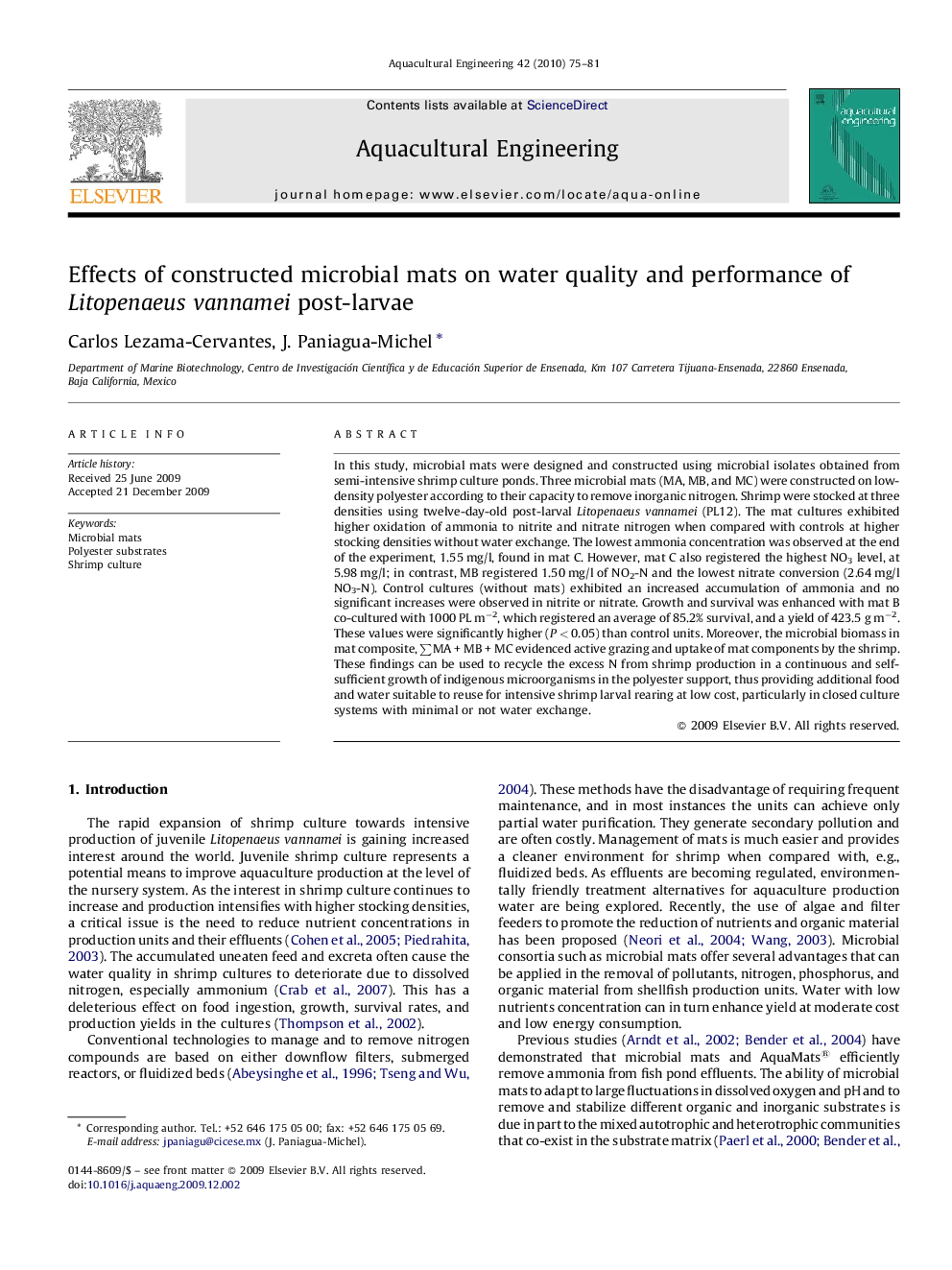| Article ID | Journal | Published Year | Pages | File Type |
|---|---|---|---|---|
| 6381486 | Aquacultural Engineering | 2010 | 7 Pages |
Abstract
In this study, microbial mats were designed and constructed using microbial isolates obtained from semi-intensive shrimp culture ponds. Three microbial mats (MA, MB, and MC) were constructed on low-density polyester according to their capacity to remove inorganic nitrogen. Shrimp were stocked at three densities using twelve-day-old post-larval Litopenaeus vannamei (PL12). The mat cultures exhibited higher oxidation of ammonia to nitrite and nitrate nitrogen when compared with controls at higher stocking densities without water exchange. The lowest ammonia concentration was observed at the end of the experiment, 1.55 mg/l, found in mat C. However, mat C also registered the highest NO3 level, at 5.98 mg/l; in contrast, MB registered 1.50 mg/l of NO2-N and the lowest nitrate conversion (2.64 mg/l NO3-N). Control cultures (without mats) exhibited an increased accumulation of ammonia and no significant increases were observed in nitrite or nitrate. Growth and survival was enhanced with mat B co-cultured with 1000 PL mâ2, which registered an average of 85.2% survival, and a yield of 423.5 g mâ2. These values were significantly higher (P < 0.05) than control units. Moreover, the microbial biomass in mat composite, âMA + MB + MC evidenced active grazing and uptake of mat components by the shrimp. These findings can be used to recycle the excess N from shrimp production in a continuous and self-sufficient growth of indigenous microorganisms in the polyester support, thus providing additional food and water suitable to reuse for intensive shrimp larval rearing at low cost, particularly in closed culture systems with minimal or not water exchange.
Keywords
Related Topics
Life Sciences
Agricultural and Biological Sciences
Aquatic Science
Authors
Carlos Lezama-Cervantes, J. Paniagua-Michel,
